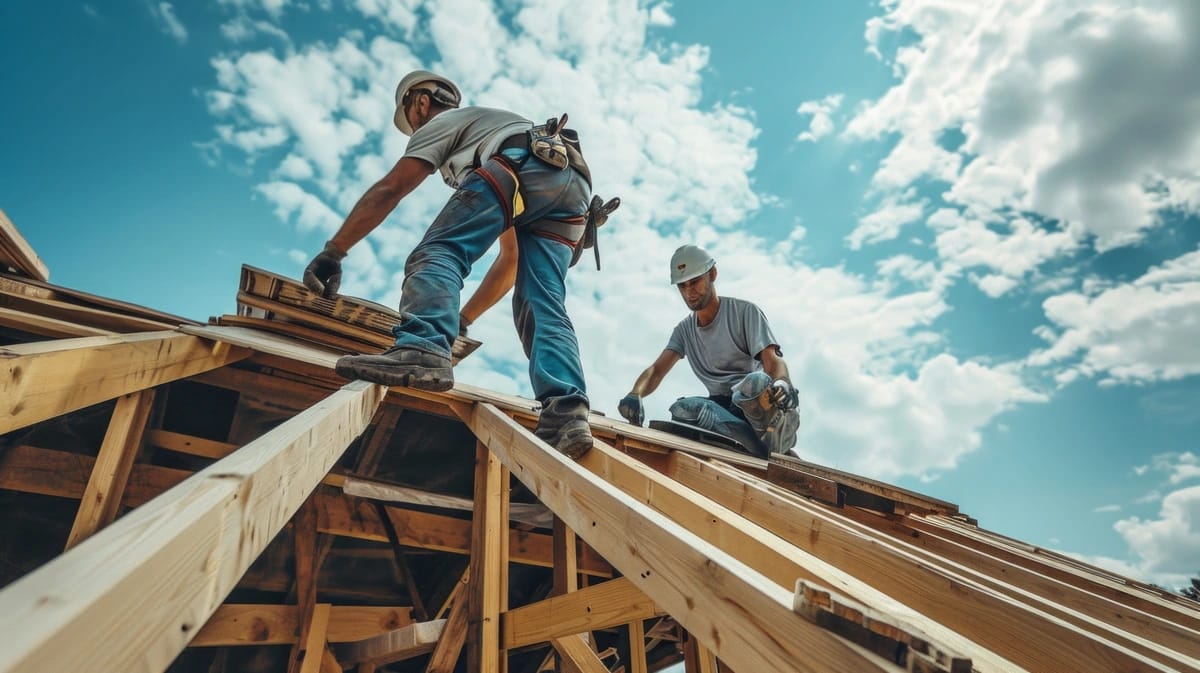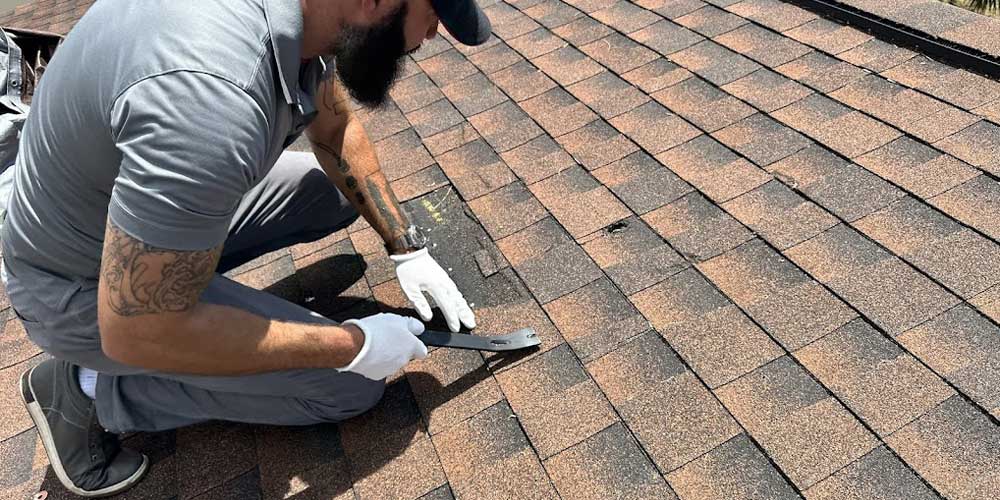Roofers Oahu: Competent Specialists for Roof Installations and Fixes
Roofers Oahu: Competent Specialists for Roof Installations and Fixes
Blog Article
A Homeowner's Guide to Types of Roofs: Selecting the Right Style for Your Needs

Popular Roof Covering Styles
When it involves picking a roof covering style, house owners typically consider their choices thoroughly to make sure both visual appeal and capability. Amongst the most prominent styles are the gable, hip, and level roof coverings, each offering distinct advantages and aesthetic qualities.
Gable roofs, defined by their triangular shape, are preferred for their simple style and efficient water drain. This style is particularly well-suited for regions with heavy rains or snow, as it lessens the risk of water merging.
Hip roofing systems, which slope on all four sides, offer additional security and longevity, making them an excellent choice for locations vulnerable to high winds. Their building complexity permits higher style convenience and can boost the overall aesthetic allure of a home.
Flat roofs use a modern aesthetic and take full advantage of useful exterior area, making them preferred for urban setups. While they call for even more upkeep to avoid water build-up, their smooth appearance can enhance contemporary style.
Eventually, the choice of roofing style should reflect the house owner's individual preference while thinking about factors such as regional climate, architectural design, and possible resale value. Each style adds distinctly to a home's overall personality and efficiency.

Material Options
Choosing the proper roof material is simply as vital as choosing the best design, as it dramatically influences the roofing's longevity, upkeep demands, and total visual. roofers oahu. Homeowners have a selection of options to think about, each with special advantages and disadvantages


Metal roof provides phenomenal resilience and durability, typically going beyond 50 years, while likewise being light-weight and resistant to fire and rot. Metal roofs can be a lot more expensive upfront.
Clay and concrete ceramic tiles offer a traditional look and remarkable life expectancy yet require a durable framework due to their weight. These products are resistant and highly long lasting to severe climate condition. Wood drinks provide a rustic aesthetic however demand regular upkeep to stop rot and bug damages.
Finally, artificial roof materials, such as rubber or plastic composites, imitate the appearance of traditional products while being light-weight and low-maintenance. Eventually, the option of roof covering product should line up with the home owner's spending plan, desired life expectancy, and upkeep preferences, making sure an appropriate suit for their certain requirements.
Power Performance Factors To Consider
Energy efficiency plays a critical duty in the general efficiency of a roof, impacting both ecological sustainability and homeowner utility prices. When choosing a roof covering, it is important to think about products and styles that boost power efficiency. As an example, reflective roof materials, often referred to as "trendy roof coverings," can considerably decrease warmth absorption, decreasing indoor temperatures and decreasing the need for air conditioning.
Furthermore, the roofing's color and incline can affect its energy performance. Lighter shades generally reflect a lot more sunlight, while outstanding pitched roof coverings facilitate much better airflow, reducing warm buildup - roofers oahu. Insulation additionally plays a crucial duty; a well-insulated roofing can prevent warm loss in winter season and maintain interiors cooler in summer season, thus boosting energy cost savings
Additionally, integrating energy-efficient roof covering alternatives with photovoltaic panels can additionally minimize power prices and reliance my company on nonrenewable resources. Homeowners need to additionally think about neighborhood climate problems when picking roofing materials and styles, as these variables directly affect energy usage.
Maintenance Needs
The longevity and performance of a roof covering system are considerably influenced by the maintenance demands connected with its design and products. Various roofing kinds require differing levels of maintenance, which can affect both the house owner's company website time and spending plan.
Normal cleansing of seamless gutters is necessary to stop water damages and prolong the roofing's life-span. These roofs also benefit from cleaning up to preserve aesthetic appeal and performance.
Ceramic tile roofs, understood for their durability, demand less regular maintenance but call for careful inspection and substitute of harmed tiles. Flat roof coverings, although using modern-day aesthetics, typically require even more focus; they call for normal examination for merging water and debris elimination to prevent leaks.
Eventually, comprehending the upkeep requirements linked with different roof covering styles makes it possible for homeowners to make educated choices, ensuring the chosen roof straightens with their way of life and dedication to upkeep. Focusing on upkeep will enhance the roofing system's performance and extend its service life, giving peace of mind for years ahead.
Effect On Resale Value
When considering a brand-new roofing design, home owners should acknowledge that the choice can significantly affect the residential or commercial property's resale worth. An appropriate roofing system not just improves aesthetic allure however likewise signals to prospective buyers that the home is well-maintained and structurally noise. Various roofing materials and designs bring varying degrees of charm in the real estate market.
As an example, asphalt tiles are preferred as a result of their price and variety of colors, usually appealing to budget-conscious purchasers. Alternatively, a metal roofing system, while more expensive in advance, supplies durability and energy performance, which can bring in buyers searching for reduced upkeep and sustainability. In addition, one-of-a-kind designs such as slate or floor tile can add a touch of deluxe, possibly boosting the residential or commercial property's value in upscale markets.
Regional choices additionally play a crucial duty; homes in areas with heavy snowfall might profit from steeply pitched roofing systems, while seaside regions may prefer durable products immune to deep sea deterioration (roofers oahu). Inevitably, property owners must think about both aesthetic allure and sensible benefits when choosing a roof covering. A thoughtful option makes certain that the financial investment not only meets personal requirements however also improves the property's bankability and resale possibility
Final Thought
To conclude, selecting the ideal roof covering style requires a mindful analysis of various factors, consisting of neighborhood environment, building design, and upkeep needs. Each roof covering option, whether it be gable, hip, or flat, has unique advantages and drawbacks that impact energy effectiveness and possible resale worth. Eventually, a well-informed choice relating to roof choice can improve the aesthetic allure, functionality, and durability of a home, guaranteeing it continues to be a beneficial possession for years to come.
Picking the appropriate roofing system style for your home is an important choice that can substantially affect both appearances and capability. While gable roof coverings stand out in water drain, hip roofings might provide greater resilience against wind.When considering a new roof here design, house owners should recognize that the selection can considerably influence the property's resale value. Inevitably, home owners should think about both visual allure and functional advantages when choosing a roof.In conclusion, picking the appropriate roofing system style necessitates a cautious evaluation of different variables, consisting of regional environment, building layout, and maintenance demands.
Report this page